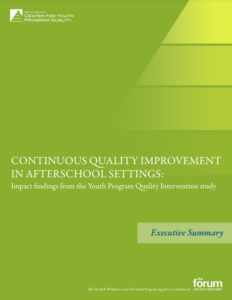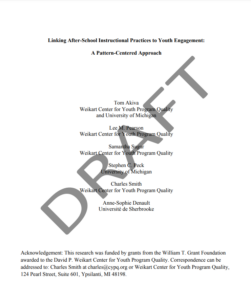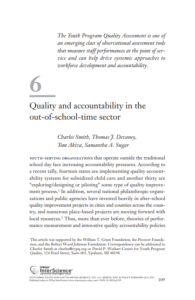Publications by Samantha Sugar
Back to Publications
The David P. Weikart Center for Youth Program Quality conducted a three year intervention study to examine the Youth Program Quality Intervention (YPQI). The YPQI is a data-driven continuous improvement model for school and community-based sites serving youth during afterschool hours.
This paper uses pattern centered methods to describe the association between the quality of instruction available and youth’s level of mental engagement with that instruction.
This paper uses pattern centered methods to describe the association between the quality of instruction available and youth’s level of mental engagement with that instruction.
In the fragmented OST sector, defining and measuring quality in terms of staff behaviors provides a common framework that can reduce obstacles to performance improvement and streamline data-driven accountability. This chapter views the point of service as the critical unit of study because it is ubiquitous across OST programs and because it is the place where key developmental experiences are intentionally delivered.
This report describes the process of development of the STEM supplement to the Youth Program Quality Assessment and preliminary reliability and validity evidence based on data collected during The Afterzone Summer Scholars program sponsored by the Providence After School Alliance (PASA).




